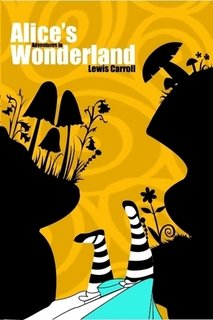All Nonfiction
- Bullying
- Books
- Academic
- Author Interviews
- Celebrity interviews
- College Articles
- College Essays
- Educator of the Year
- Heroes
- Interviews
- Memoir
- Personal Experience
- Sports
- Travel & Culture
All Opinions
- Bullying
- Current Events / Politics
- Discrimination
- Drugs / Alcohol / Smoking
- Entertainment / Celebrities
- Environment
- Love / Relationships
- Movies / Music / TV
- Pop Culture / Trends
- School / College
- Social Issues / Civics
- Spirituality / Religion
- Sports / Hobbies
All Hot Topics
- Bullying
- Community Service
- Environment
- Health
- Letters to the Editor
- Pride & Prejudice
- What Matters
- Back
Summer Guide
- Program Links
- Program Reviews
- Back
College Guide
- College Links
- College Reviews
- College Essays
- College Articles
- Back
Alice's Adventures In Wonderland, A Christmas Carol
Many people do not remember the extraordinary writers that came before us.
They do not realize their similarities and differences. Charles Dickens and Charles Lutwidge Dodgson, also known as Lewis Carroll, are two authors of the 1800's that seem to slip our minds. Unfortunately, we only think of the present day movies that are based on the children's novels. Both Alice's Adventures in Wonderland and A Christmas Carol are well-liked movies that inspire its viewers. The real question is, what were the authors like whose novels were transformed into movies? What are the specific characteristics of their writing? What were their original novels like?
Charles Dickens was born in Portsmouth, England on February 7, 1812. He became a reporter for Doctor's Common Courts. He wrote under the name 'Doz' after his relationship ended with Maria Beadnell. His illustrations later evolved into books in which he wrote A Christmas Carol in 1844. The success of A Christmas Carol led him to write The Chimes and The Cricket and the Hearth. He later died on June 9, 1870 after suffering from a second stroke.
Charles Lutwidge Dodgson was born in Daresbury, Cheshire, England on January 27, 1832. He was a successful mathematician and wrote poetry before he wrote Alice's Adventures in Wonderland in 1865. Alice Liddell inspired Dodgson to write Alice's Adventures in Wonderland. The success led him to write Through the Looking Glass and What Alice Found There, The Hunting of the Snark, and Sylvie and Bruno. He later died on January 14, 1898.
In A Christmas Carol, Charles Dickens entices the readers with his very descriptive and humorous voice. Dickens' writing is very clear and understandable, and writes almost entirely with just action verbs instead of the common linking verbs (is, are, was, were, etc.). Although his writing is very sophisticated his humorous voice shines through when he directly talks to his reader. An example of his humorous voice is, 'Old Marley was as dead as a door-nail. Mind! I don't mean to say that I know of my own knowledge, what there is dead about a door-nail' (124). This Children's Fiction novel presents the story of Ebenezer Scrooge, and how his life is changed because of the actions of three spirits, Ghost of Christmas Past, Ghost of Christmas Present, and Ghost of Christmas Future. Some of the most noticeable differences between Charles Dickens and authors today are the vocabulary and the unit of marking. Charles Dickens uses staves instead of chapters. In the dictionary a stave is defined as a verse or stanza of a poem or song, but this is a novel. Charles Dickens was actually linking his book to the song A Christmas Carol just to be humorous!
In Alice's Adventures in Wonderland, Charles Lutwidge Dodgson, whose pen name was Lewis Carroll, transports you to a world of adventures where he captivates the reader with this very imaginative tale. His voice seems humorous, and his description of Alice's experiences conducts you to read on. His humorous voice comes in handy when Alice is falling down the rabbit hole, 'I wonder if I shall fall through the center of the earth! How funny it'll seem to come out among the people that walk with their heads downward!' (15). Charles questions his readers many times throughout the book, ''(and she tried to curtsey as she spoke'fancy curtseying as you're falling through the air! Do you think you could manage it?)' (15). He writes with such an enthusiasm making this a very successful Children's Fiction novel. Like Dickens, Dodgson uses more action verbs than linking verbs. A noticeable difference between Dodgson and authors today are that Dodgson uses a double dash (--) instead of a comma (,) to begin a conjunction.
Neither Dodgson nor Dickens use verbal phrases in their writing. They both choose to use short complete sentences in their writing to draw attention instead of using verbal phrases.
Charles Dickens and Charles Lutwidge Dodgson are both extraordinary authors, but are often not recognized for their work because of the well-liked movies based on their novels. Now, whenever I watch these amazing movies I will think of the original authors.
Similar Articles
JOIN THE DISCUSSION
This article has 0 comments.

